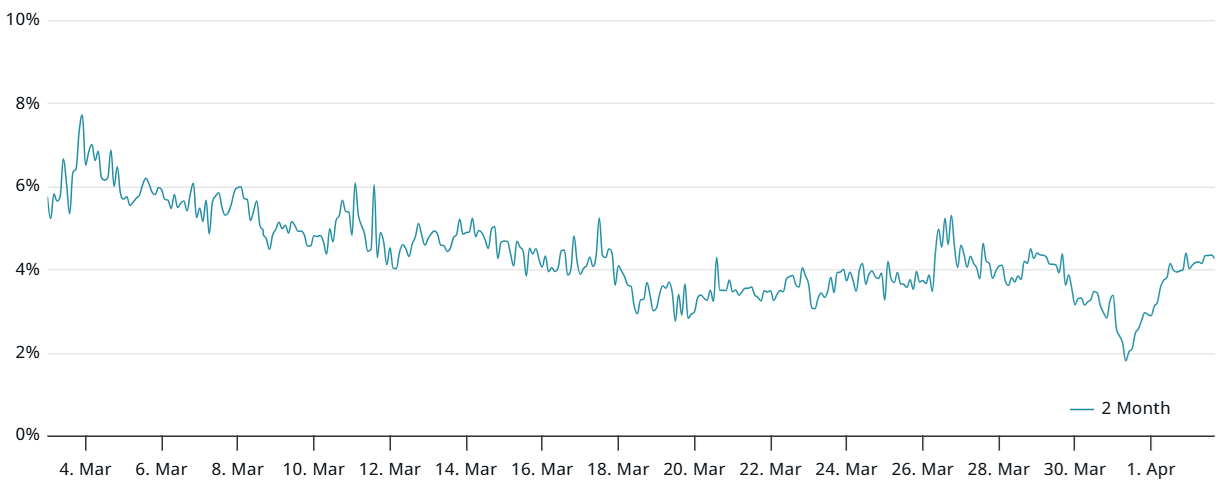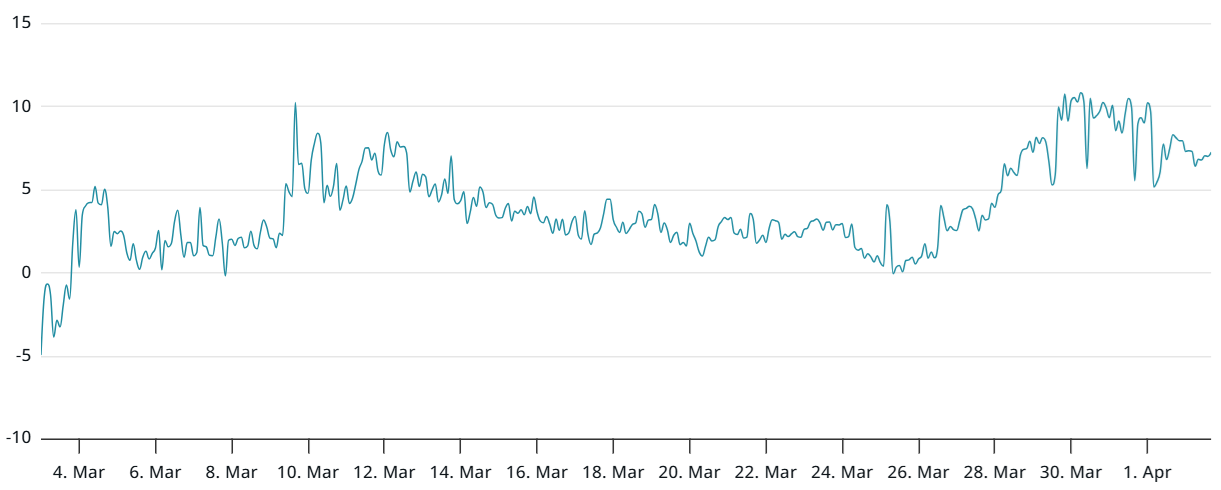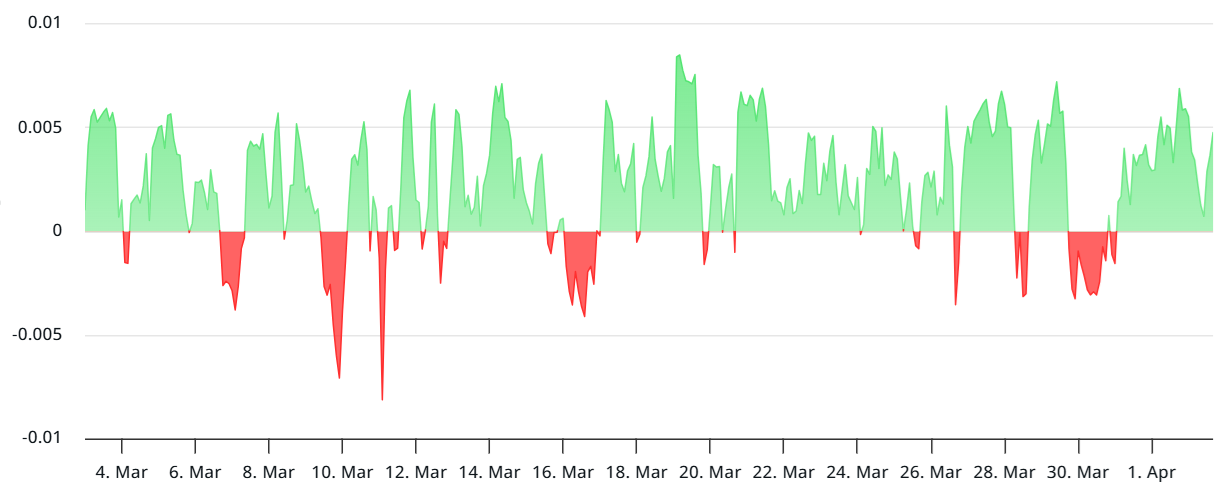The price of Ether (ETH) has increased by 6.4% from its low of $1,768 on March 30, but the altcoin has struggled to reclaim the $2,000 mark. Some traders speculate that this downward trend is partly linked to the declining memecoin market, which, although not solely related to the Ethereum network, has stifled activity across the decentralized applications (DApps) ecosystem and the broader cryptocurrency space.
Currently, Ether is down 44% year-to-date, and metrics from derivatives indicate that traders remain far from optimistic and exhibit little faith in a robust recovery in the short term. This is reflected in the premium on Ether futures when compared to spot markets.
While this figure climbed to 4% on April 2 from 2% on March 31, it still falls short of the neutral threshold of 5%. Such data suggests that Ether investors are still hesitant to adopt a bullish stance, even with the enhanced support at the $1,800 price level.

Annualized premium on Ether 2-month futures. Source: Laevitas.ch
To evaluate whether large investors and market makers lack confidence in Ether’s potential, one should examine the ETH options market. Under neutral circumstances, the 25% delta skew should be evenly balanced between call (buy) and put (sell) options, typically ranging between -6% and 6%.

Deribit ETH 30-day options 25% delta skew (put-call). Source: Laevitas.ch
The Ether delta skew has dipped from the 9% level recorded on March 31, with the current reading at 7%. This indicates that a risk-averse sentiment is still prevalent. The increasing cost of hedging suggests that prominent investors harbor concerns over further declines in ETH’s price, implying that it may take a while for traders to regain their confidence.
Ethereum maintains strong adoption despite drop in DApp revenue
While one could easily link much of Ether’s price fall to the 49% reduction in Ethereum DApps revenue from January to March, it’s important to note that the diminished network activity may limit the influx of new users and dampen overall demand for ETH. However, Ethereum’s advantages over conventional financial markets and its leading position in decentralized finance (DeFi) remain intact.
Currently, the stablecoin reserves on Ethereum are nearing an all-time high of $124.5 billion, with Ethereum maintaining its status as the leading platform, holding $49 billion in total value locked (TVL). This data points to considerable potential for ETH adoption, especially as new use cases emerge, such as structured products and more innovative DeFi applications utilizing synthetic assets.
Despite initial difficulties with metaverse applications, waning interest in memecoins, and the notable decline in non-fungible token (NFT) marketplace activity, the Ethereum network continues to grow.
ETH funding rate remains neutral as ETFs reduce retail trading interest
Beyond simply analyzing how professional traders are positioned, it is also crucial to gauge the sentiment of retail investors. Perpetual futures (inverse swaps) tend to closely follow spot prices, as leverage imbalances are corrected through a fee known as the funding rate, charged every eight hours. In neutral conditions, this rate usually oscillates between 0.1% and 0.3% over a week.

Funding rate for Ether’s 8-hour perpetual futures. Source: Laevitas.ch
The ETH perpetual funding rate has remained neutral since March 31, indicating that retail traders are not attempting to catch a falling asset. A significant factor contributing to this lack of enthusiasm is the spot Ether exchange-traded funds (ETFs), which experienced net outflows of $37 million over the past two weeks.
While derivatives data often reflects past trends and does not directly indicate potential further declines in ETH’s price, sentiment could quickly shift, especially considering the positive momentum from notable investments in ETH and vocal endorsements. For now, both professional traders and retail investors are exercising caution regarding ETH’s price trajectory.
This article is intended for informational purposes only and should not be interpreted as legal or investment advice. The opinions and views expressed are solely those of the author and do not necessarily represent the views of any associated entities.
